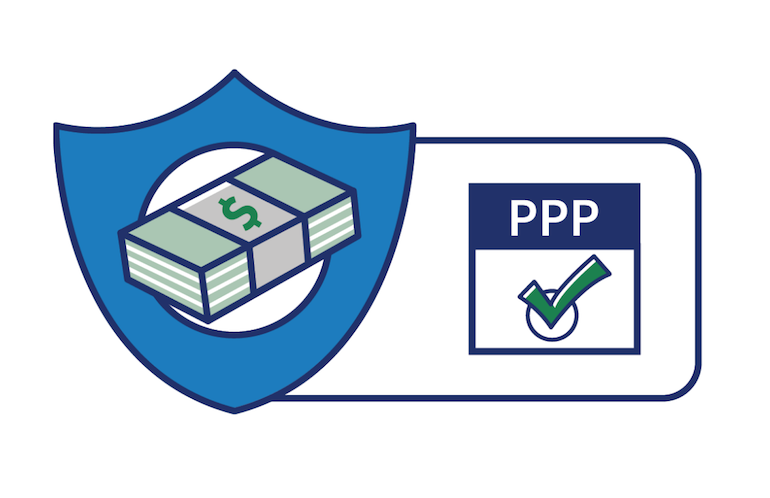Small businesses struggling from the impact of COVID-19 are getting another round of financial help from the just passed Emergency Coronavirus Relief Act of 2020, a bill that contained $284 billion for the renewed Paycheck Protection Program. (PPP). The new loans will be tax deductible and available to any lawn care and landscape contractor or business with fewer than 300 workers. Sole proprietors, independent contractors and the self-employed are also eligible, and can apply even if they previously applied and were granted a PPP loan from the first round.
The PPP loans are designed to provide a direct incentive for contractors and other small businesses to keep their workers on the payroll. In addition to providing relief for first-time borrowers, a second PPP loan for businesses facing significant revenue declines is available to any business operating before February of 2020, that suffered at least a 30% decline in revenues in any quarter of 2020 when compared to 2019.
Although the funds were allocated to the Small Business Administration (SBA), a lawn care and landscape contractor can apply through any existing, qualified SBA lender, federally insured depository institution, federally insured credit union or Farm Credit System institution.
Overview Of PPP Loans
The current bill funds three categories of PPP loans, including:
- First-time PPP loans for businesses that qualified under the CARES Act but did not get a loan
- Second-draw PPP loans for businesses that obtained a PPP loan but are now in need of additional funding, and
- Additional funding for businesses that returned their first PPP loan or did not get the full amount for which they qualified.
In general, the loans will be forgiven if all employee retention criteria are met and the funds are used for eligible expenses. PPP loans have an interest rate of 1% with no collateral or personal guarantees required. And, best of all, neither the government nor lenders will charge any small business fees.
Aid For Business
The original Paycheck Protection Program, according to many experts, helped preserve jobs and kept quite a few struggling businesses operating by giving small businesses — generally those with fewer than 500 workers a one-time loan to cover up to eight weeks of payroll and other business expenses up to a maximum of $10 million. As is the case with the renewed PPP, the loans, guaranteed by the SBA were made by banks and other lenders with a forgiveness option for businesses that complied with the program’s rules.
The new round of PPP, or PPP2 as it is being called, is similar to the first round but with several important differences. In general, PPP2 will permit first-time borrowers from the following groups:
- Businesses with 300 or fewer employees that are eligible for other loans under the SBA’s 7(a) loan program
- Sole proprietors, independent contractors and eligible self-employed individuals, as well as —
- Not-for-profits, including churches
- Accommodation and food services operations with fewer than 300 employees per physical location.
Most importantly, borrowers that returned all or part of a previous PPP loan can reapply for the maximum amount available to them. What’s more, previous PPP recipients can apply for another loan of up to $2 million provided they:
- Have 300 or fewer employees
- Have used or will use the amount of their first PPP loan, and
- Can show a 30% gross revenue decline in any quarter of 2020 compared with the same quarter in 2019.
Revenue Reduction Computation
A business must have been in operation by February 15, 2020 in order to be eligible, but what if the lawn care or landscaping operation wasn’t in business in 2019?
A contractor that wasn’t in business in 2019 but was in business before February 15, 2020 simply compares gross receipts from the second, third, or fourth quarter of 2020 to that first quarter of 2020 to determine whether gross receipts were reduced by at least 30%.
It should be noted that, according to the lawmakers, for loans of up to $150,000, revenue loss can be certified when applying. It is only on or before forgiveness is applied for that those revenue losses will need to be documented.
The Fine Print On PPP
As with the earlier PPP, the costs eligible for loan forgiveness in PPP2 include payroll, rent, covered mortgage interest and utilities. Plus, under PPP2, the following are potentially forgivable:
- Covered worker protections and facility modification expenditures, including personal protective equipment needed to comply with COVID-19 federal health and safety guidelines
- Expenditures to suppliers that are essential at time of purchase to the recipient’s current operations
- Covered operating costs such as software and cloud computing services and accounting needs.
Loan Forgiveness
As mentioned, borrowers may be eligible for loan forgiveness if the PPP funds were used for eligible payroll costs, payments on business mortgage interest payments, rent, or utilities during either the 8- or 24-week period after the PPP funds were dispersed. A borrower can apply for forgiveness once it has used all loan proceeds for which forgiveness is being requested.
In order to be eligible for full loan forgiveness, PPPP borrowers must spend no less than 60% of the borrowed funds on payroll over a covered period of either eight or 24 weeks — the same requirements as in the earlier version that ended last summer.
PPP borrowers may receive an amount of up to 2.5 times the average monthly payroll costs in the year prior to the loan or the calendar year, again the same as under PPP1 although the maximum loan amount has been cut from $10 million in the first round to the current $2 million maximum.
Applying For PPP Funds
The COVID relief bill created a simplified application process for loans of $150,000 or less. Specifically, a borrower’s loan will be forgiven if a borrower signs and submits to the lender a certification of one page or less containing a description of the number of employees the borrower was able to retain because of the loan, the estimated total amount of the loan spent on payroll costs, and the total loan amount.
The SBA is creating a simplified application form and is not expected to require additional materials unless necessary to substantiate revenue losses or relevant records related to employment for four years and other records for three years, as the SBA may view and audit these loans to check for fraud.
PPP2 includes set-asides to support both first and second-time borrowers with 10 or fewer employees, first-time PPP borrowers that have recently become eligible, and for loans made by community lenders. Repealed by PPP2 is the former requirement that PPP borrowers deduct the amount of any Economic Injury Disaster Loan (EIDL) advance from their forgiveness amount.
Tax Deductions For PPP Expenses
Although the CARES Act excluded PPP loan forgiveness from gross income, it did not specifically address whether the expenses used to achieve loan forgiveness would continue to be deductible. The IRS was quick to announce that no deduction would be allowed for any if the payment of the expense resulted in forgiveness of a PPP loan.
The new, COVID-Relief bill specifically states that business expenses paid with forgiven PPP loans are tax deductible. For the record, in addition to clarifying the deductibility of expenses paid with PPP funds, the COVID-Relief bill clarifies that gross income does not include forgiveness of certain loans, EEIDL loan grants, and certain loan repayment assistance.
A Warning: Although the COVID-Relief bill, as mentioned, contained a provision allowing contractors to deduct expenses paid for with PPP loan proceeds forgiven by the government with out incurring a tax, the states may not go along with this treatment. And, because the state may not go along with allowing these deductions together with tax-free loan forgiveness, the result may be an unexpected state tax bill.
Vive La Difference
Many aspects of this round of PPP are, in general, the same. New loans are capped at $2 million, compared to $10 million under the original PPP. Applicants can have no more than 300 employees and must demonstrate at least a 30% drop in revenues from the fourth quarter of 2019 and the same period this year.
The new PPP expands the types of expenses covered to include costs such as those for cloud computing or remote-work software and equipment for government-mandated sanitation and social distancing, such as sneeze guards or air filtration systems. Even covered are “property damage” or vandalism looting due to public disturbances that occurred during 2020.
Originally, businesses that got PPP loans were not eligible to claim the employee retention tax credit, the CARES Act provision that encouraged employers not to shed jobs. Now they are.
For lawn care and landscaping contractors struggling with the impact of the COVID-19 pandemic, this $900 billion second round of financial help, especially the $284 billion slated for the PPP, may be a business saver. Keep in mind, however, the SBA merely guarantees the PPP loans. Thus, now might be a good time to discuss the opportunities presented under the re-constituted program with your banker or financial advisor.
 Battersby is a freelance writer who has specialized in taxes and finance for the last 25 years. Working from offices in the suburban Philadelphia community of Ardmore, PA, he currently writes for publications in a variety of fields, syndicates two weekly columns that appear in over 65 publications as well as regular columns in ten fields. He has also written four books.
Battersby is a freelance writer who has specialized in taxes and finance for the last 25 years. Working from offices in the suburban Philadelphia community of Ardmore, PA, he currently writes for publications in a variety of fields, syndicates two weekly columns that appear in over 65 publications as well as regular columns in ten fields. He has also written four books.











![[VIDEO] Dickies®: Discover Workwear That’s Anything But Uniform](https://turfmagazine.com/wp-content/uploads/2023/06/1647663814-4b1a2a7742790a9b1e97a3b963477850192e1d6a9dfba9b07214a77bae25d6e3-d-218x150.jpg)






























![[VIDEO] Dickies®: Discover Workwear That’s Anything But Uniform](https://turfmagazine.com/wp-content/uploads/2023/06/1647663814-4b1a2a7742790a9b1e97a3b963477850192e1d6a9dfba9b07214a77bae25d6e3-d-324x160.jpg)
Hi – can you address the definition of “seasonal employer” for PPP purposes? Looks like that it requires that you do not “operate” for more than 7 months – do you know what they mean by “operate” – is that any work at all? What if I am just cleaning/maintaining equipment but not doing client work yet – am I operating?
Its going to be a close call for me – I’m in the Midwest and I usually call my guys back April 1 and let them go Nov 15 – but I’m not doing client work that entire period.
Thanks